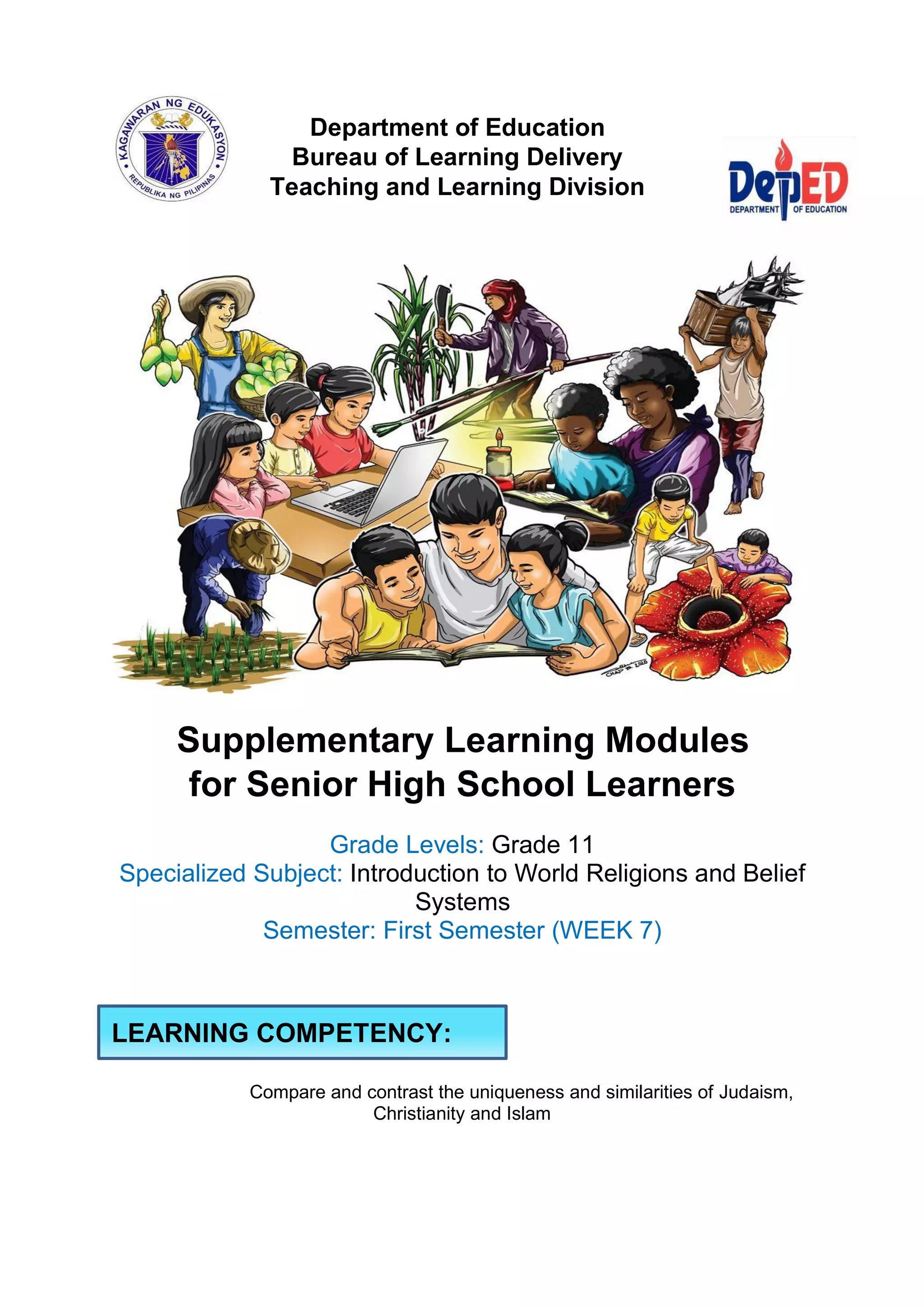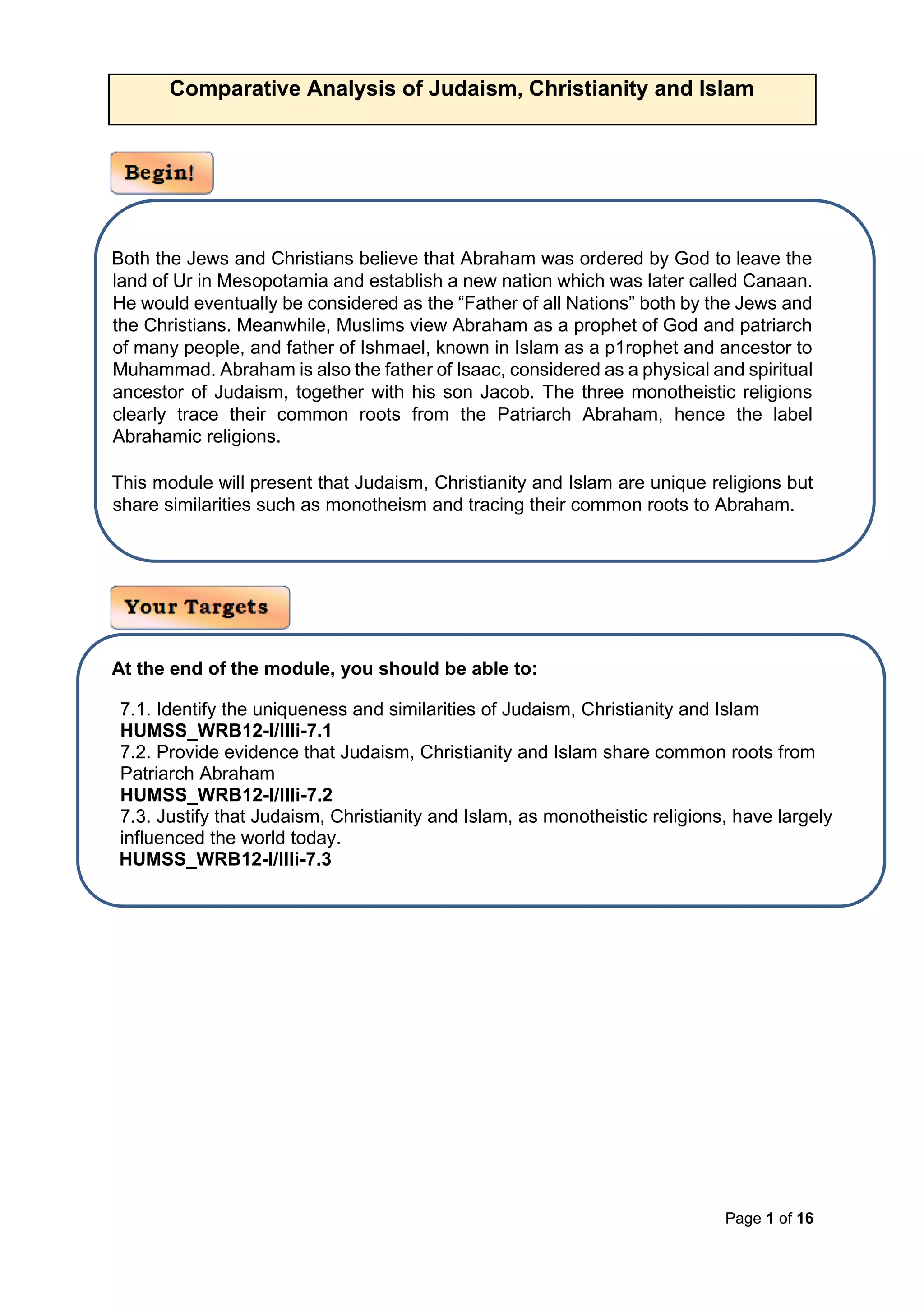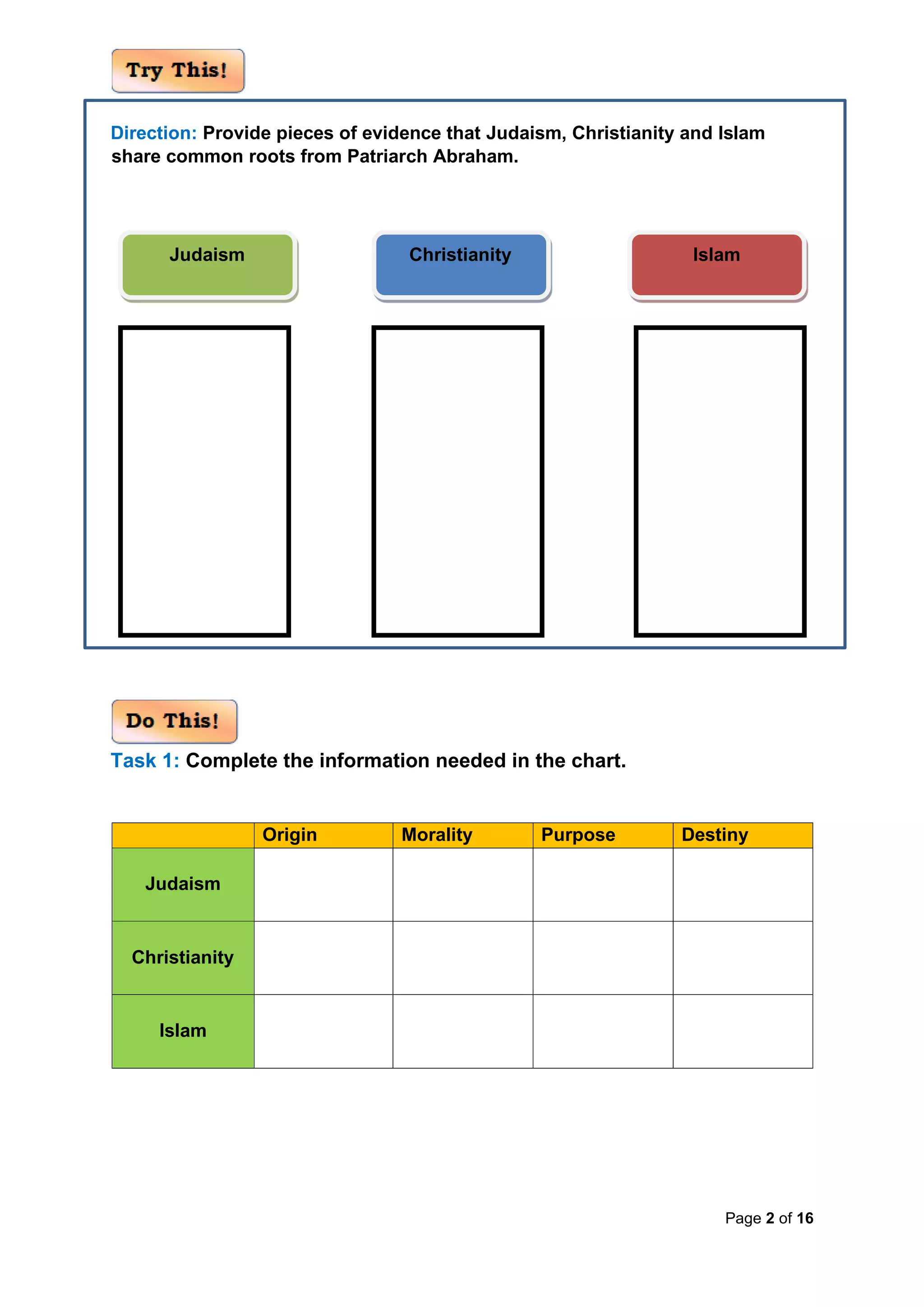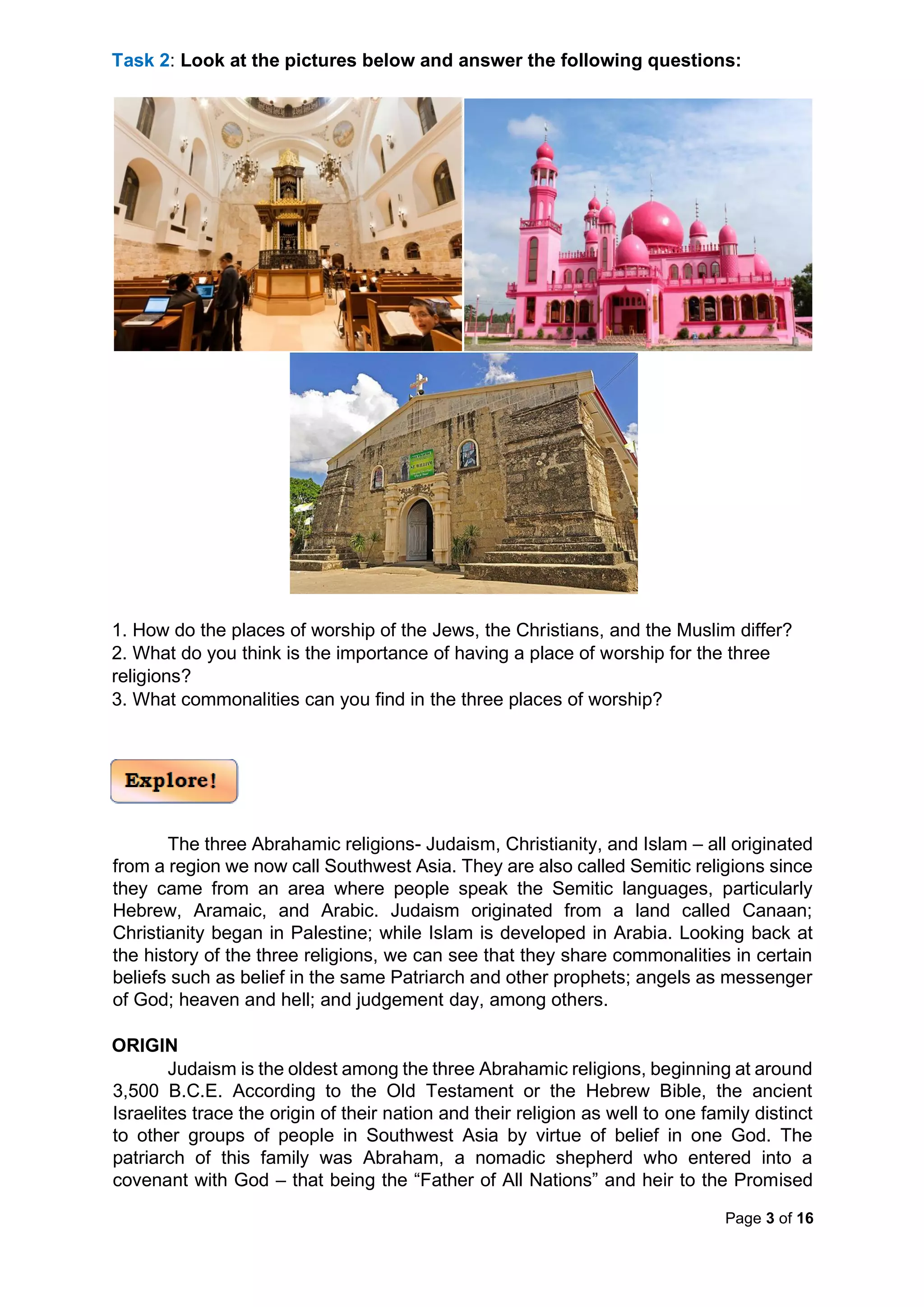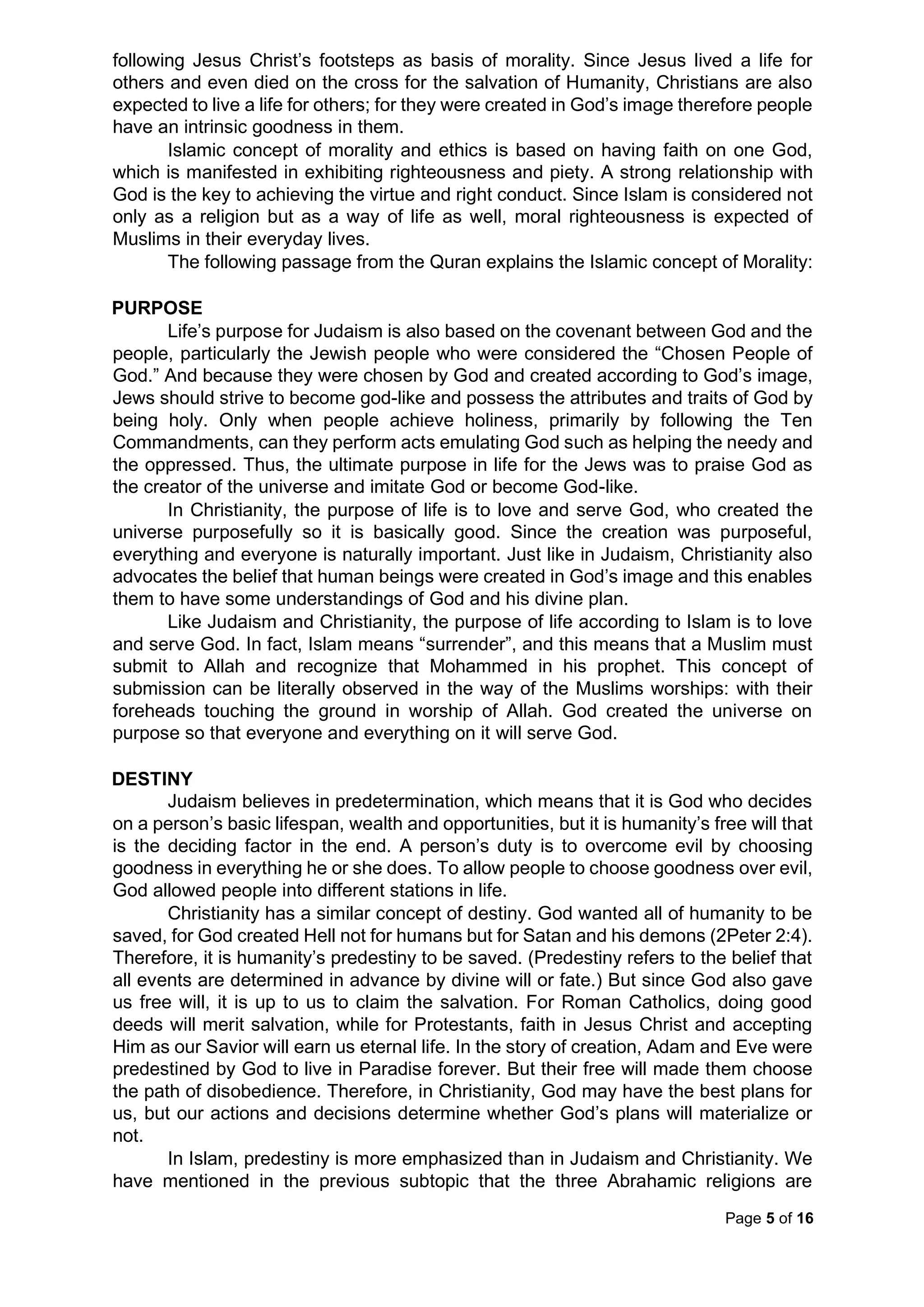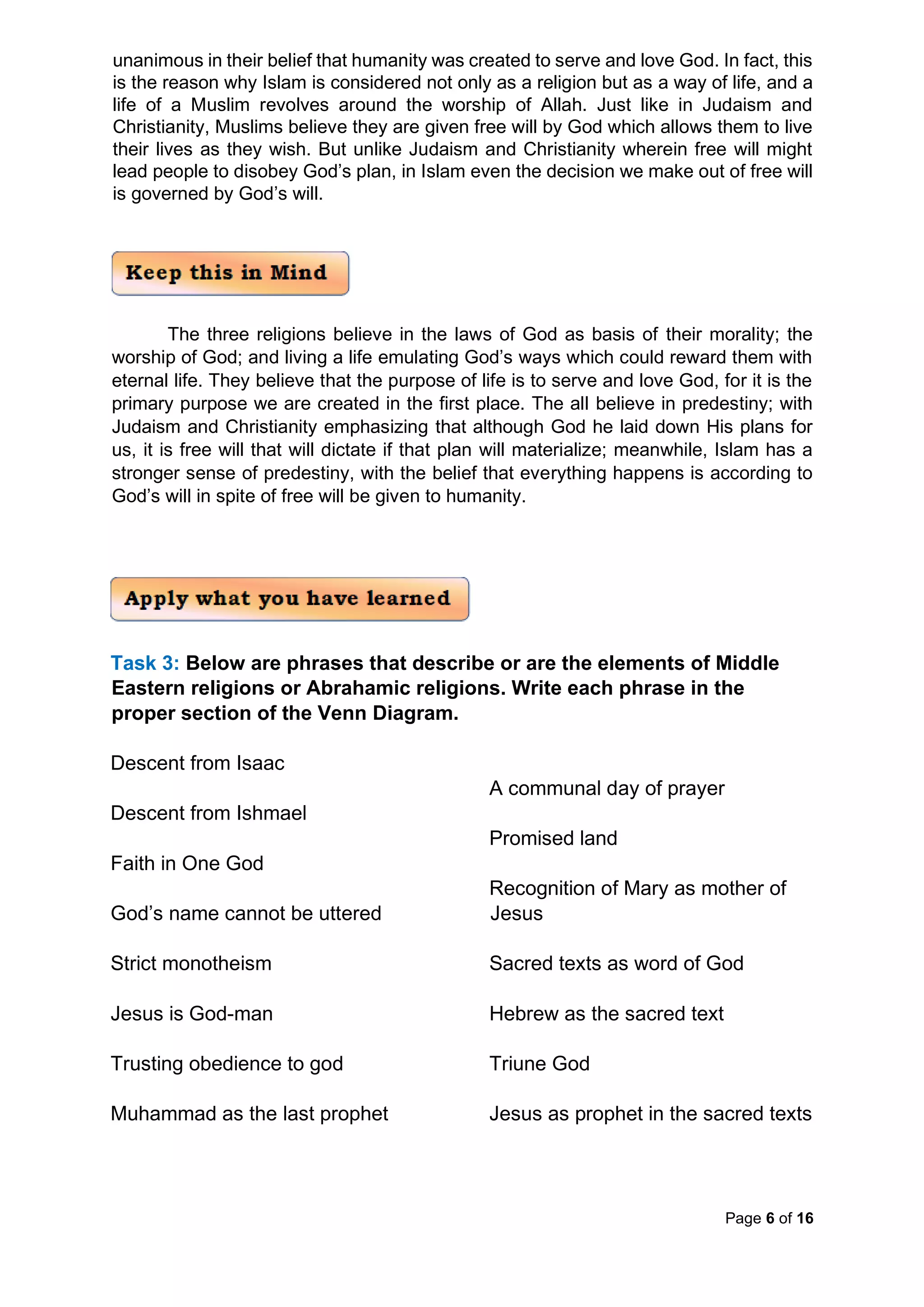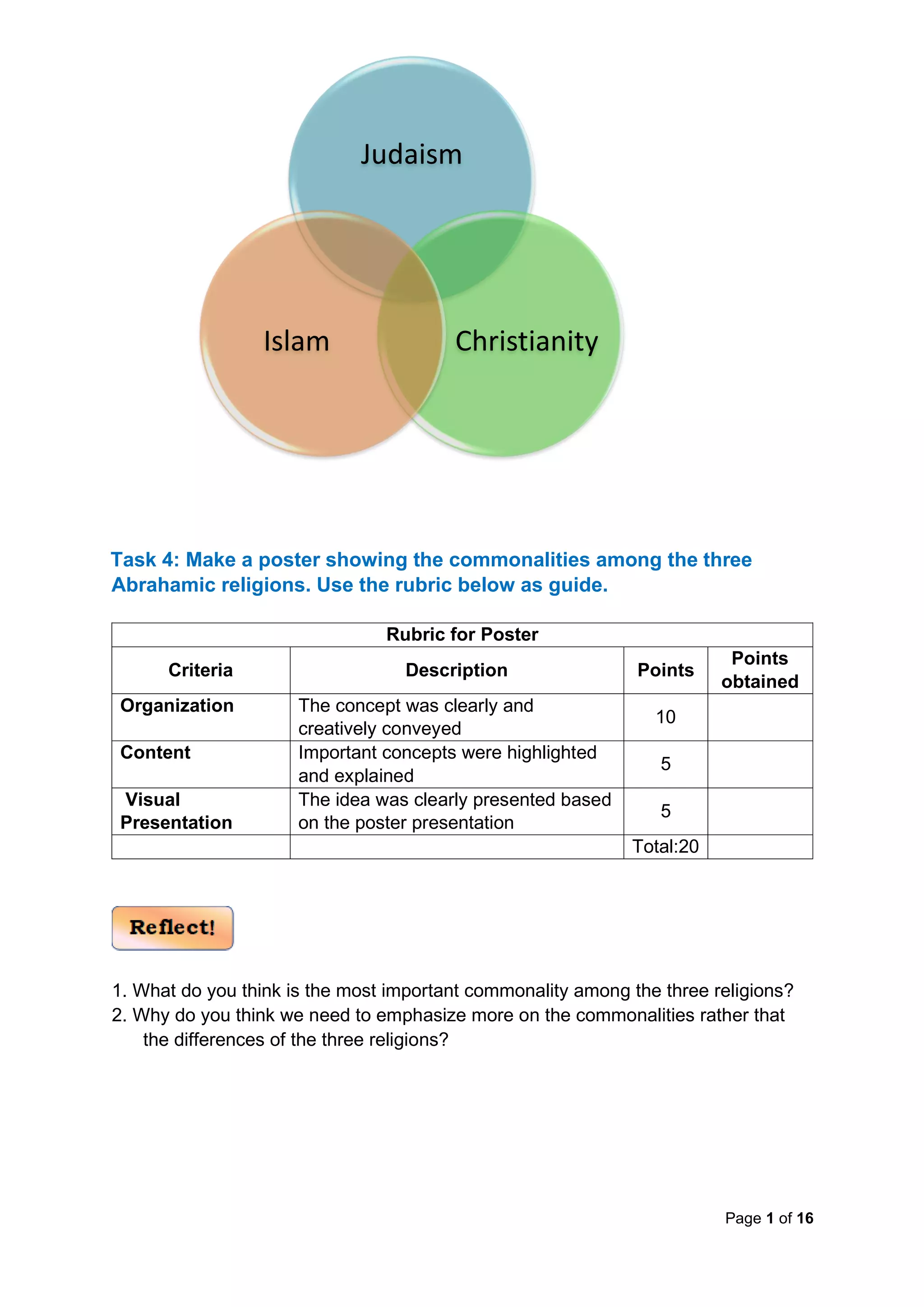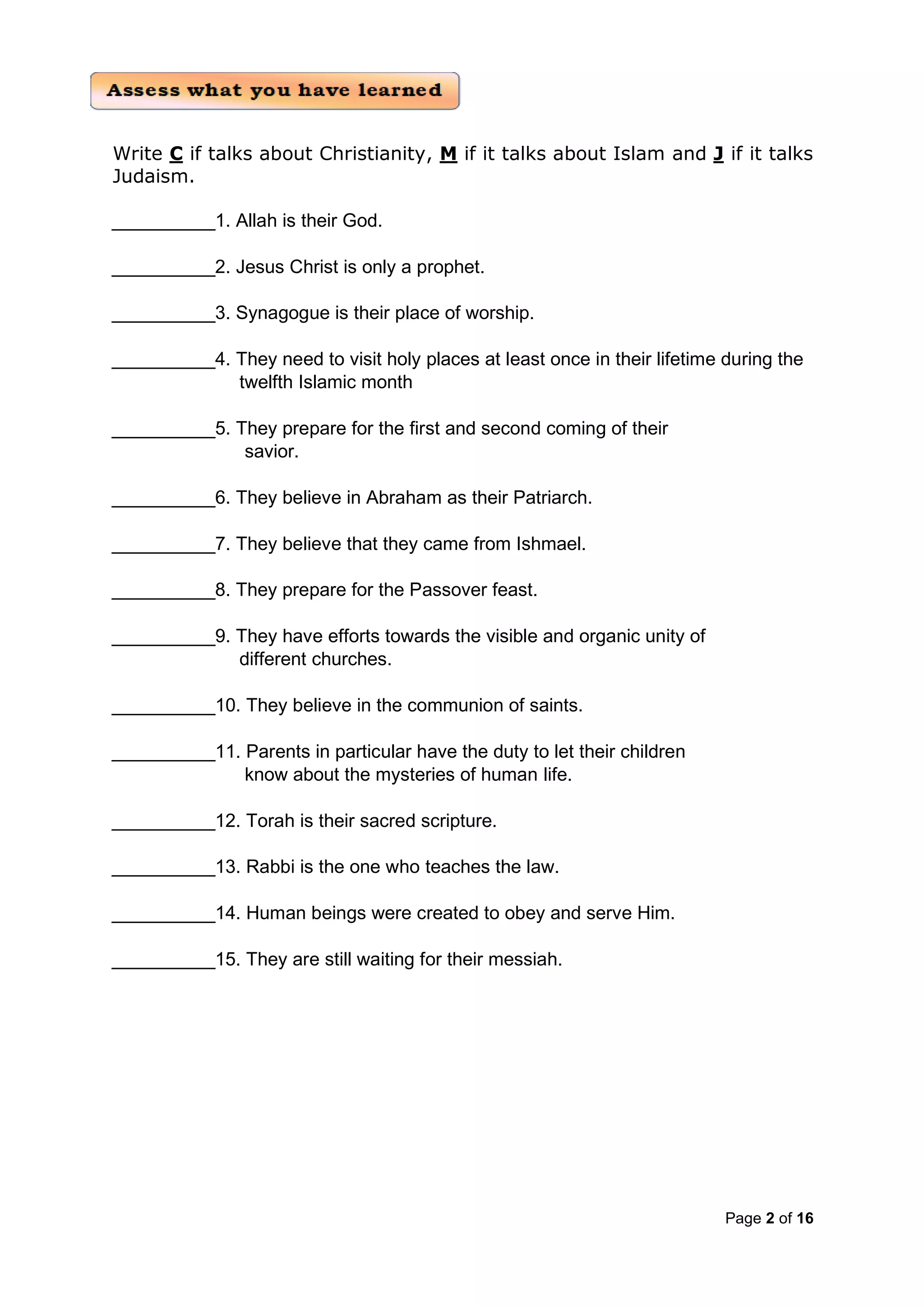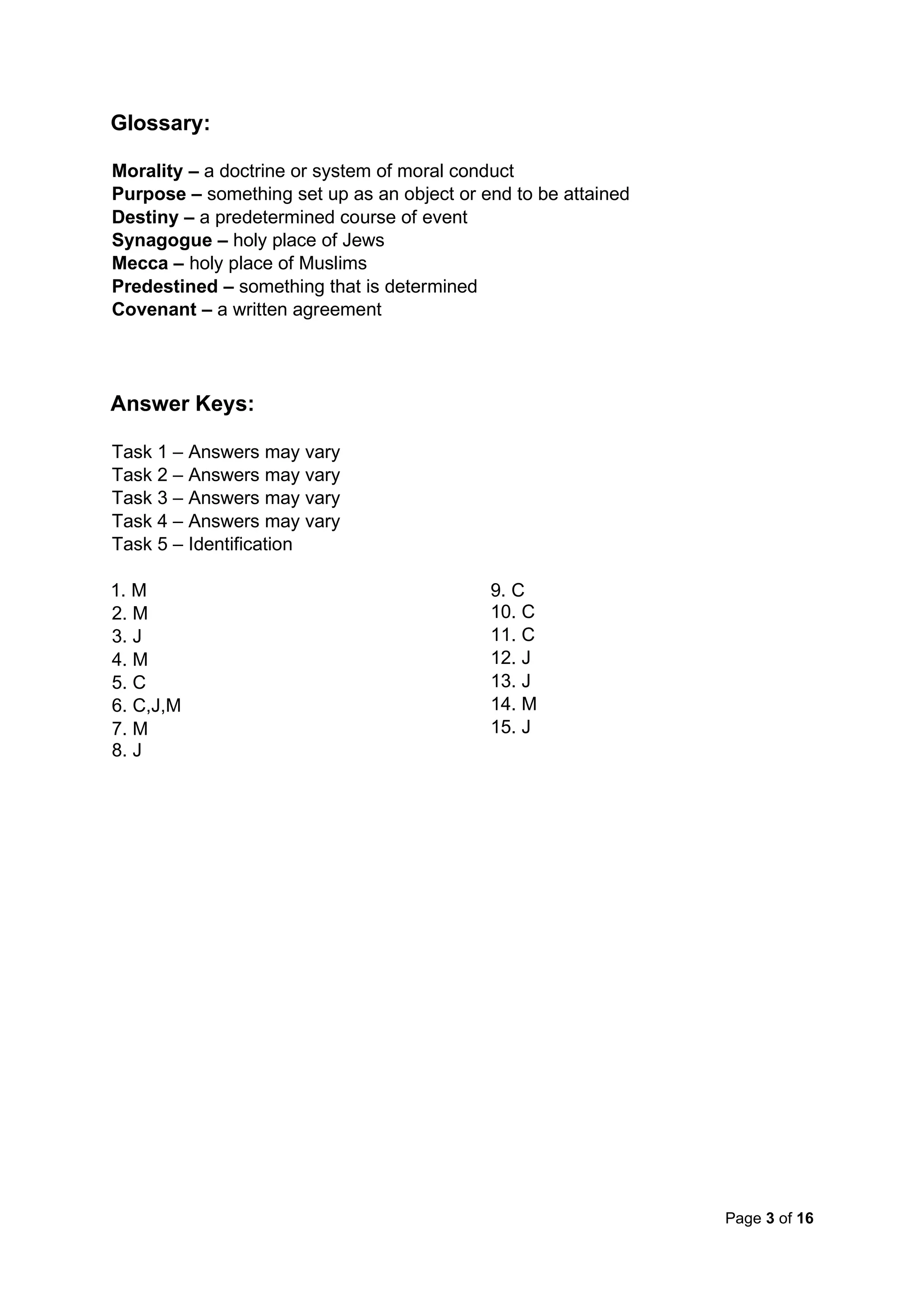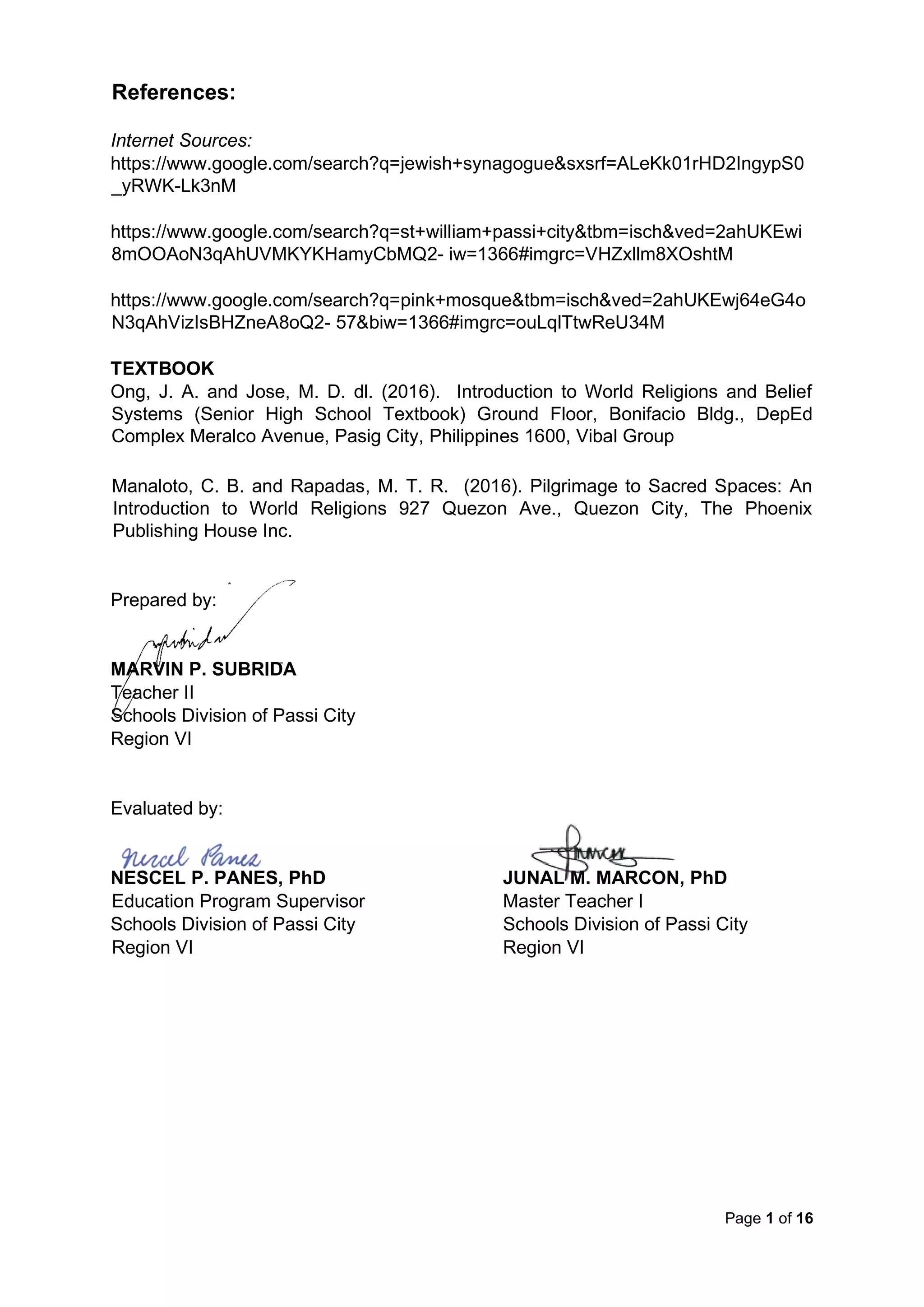The document provides a learning module that compares and contrasts the three Abrahamic religions: Judaism, Christianity, and Islam. It discusses their common origins from Abraham, their shared beliefs in monotheism, and similarities between their concepts of morality, purpose, and destiny. However, it also notes unique aspects like their different sacred texts and places of worship. The module aims to help students understand both the commonalities and differences between these major world religions.
